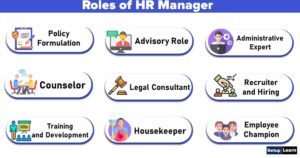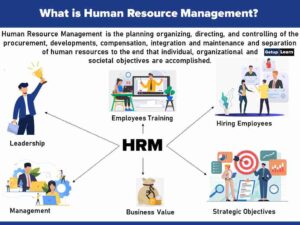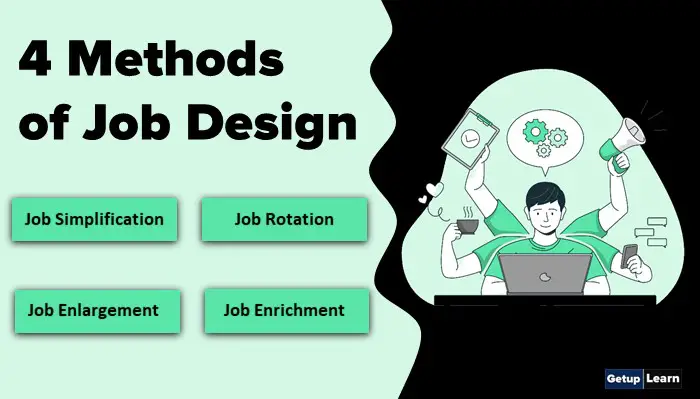
Table of Contents
Methods of Job Design
These are the methods of job design:
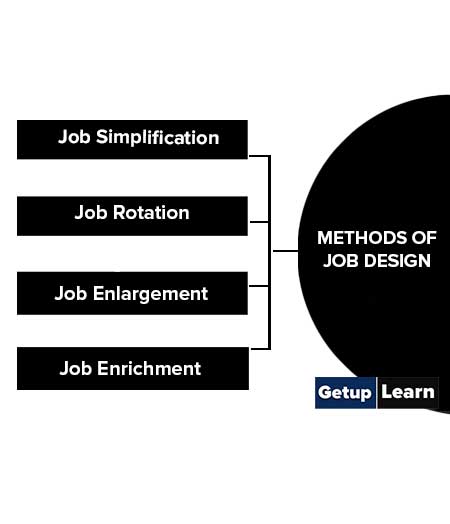
Job Simplification
In job simplification, the complete job is broken down into small subparts; this is done so that employees can do these jobs without much-specialized training. Moreover, small operations of the job can also be performed simultaneously so that the complete operation can be done more quickly. For job simplification, generally, time and motion studies are used.
Job Rotation
Job rotation implies the systematic movement of employees from one job to the other. The job remains unchanged but employees performing them shift from one job to the other. With job rotation, an employee is given an opportunity to perform different jobs, which enriches his skills, experience, and ability to perform different jobs. It is a management technique that assigns trainees to various jobs and departments over a period of a few years.
For example, an employee may spend two weeks attaching bumpers to vehicles and the following two weeks making final checks of the chassis. During the next month, the same employee may be assigned two different jobs. Therefore, the employee would be rotated among four jobs.
The advantage of job rotation is that employees do not have the same routine job day after day. Job rotation only addresses the problem of assigning employees to jobs of limited scope; the depth of the job does not change. The job cycle of the actual daily work performed has not been lengthened or changed. Instead, employees are simply assigned to different jobs with different cycles.
Advantages of Job Rotation Methods
Following are the advantages of job rotation methods given below:
- The employee experiences a variety of work, workplace, and peer groups.
- Job rotation helps to broaden the knowledge and skills of an employee.
- The main advantage of job rotation is that it relieves the employee from the boredom and monotony of doing the same job.
- With the help of this method, people become more flexible. They are prepared to assume responsibility, especially in other positions.
- Job rotation broadens the work experience of employees and turns specialists into generalists.
- It is beneficial for the management also as the management gets employees who can perform a variety of tasks to meet the contingencies.
- This method improves the self-image and personal worth of the employee.
Disadvantages of Job Rotation Methods
Let’s look at the disadvantages of job rotation methods explained below:
- Job rotation also creates disruptions. Members of the workgroup have to adjust to the new employee.
- Productivity is reduced by moving a worker into a new position just when his efficiency at the prior job was creating organizational economies.
- Training costs are increased.
- The supervisor may also have to spend more time answering questions and monitoring the work of the recently rotated employee.
- It can demotivate intelligent and ambitious trainees who seek specific responsibilities in their chosen specialty.
Job Enlargement
Job Enlargement is a job design technique in which the number of tasks associated with a job is increased (and appropriate training provided) to add greater variety to activities, thus reducing monotony. Job enlargement is considered a horizontal restructuring method in that the job is enlarged by adding related tasks. Job enlargement may also result in greater workforce flexibility.
Job enlargement is another method of job design when any organization wishes to adopt proper job design it can opt for job enlargement. Job enlargement involves combining various activities at the same level in the organization and adding them to the existing job. It increases the scope of the job. It is also called the horizontal expansion of job activities.
Advantages of Job Enlargement
Following are the advantages of job enlargement:
- Increase in the diversity of jobs.
-
Job satisfaction.
- Provides wholeness and identity with the task and increases the knowledge necessary to perform it.
- Provides a variety of skills.
- Reduces tension and boredom.
- Trains and develops more versatile employees.
Despite these advantages, this is not a completely satisfactory method of job design as it does not increase the depth of a job. Enlarged jobs require a longer training period as there are more tasks to be learned.
Job Enrichment
Job enrichment is an attempt to motivate employees by giving them the opportunity to use the range of their abilities. It is an idea that was developed by the American psychologist Frederick Hertzberg in the 1950s. It can be contrasted to job enlargement which simply increases the number of tasks without changing the challenge.
As such job enrichment has been described as ‘vertical loading’ of a job, while job enlargement is ‘horizontal loading’. An enriched job should ideally contain:
- A range of tasks and challenges of varying difficulties (Physical or Mental).
- A complete unit of work is a meaningful task.
- Feedback, encouragement, and communication.
Advantages of Job Enrichment
Following are the advantages of job enrichment given below:
- It enriches the role.
- Job enrichment is the most widely used job design as it provides meaningful learning to employees.
- It makes the work interesting and employees get motivated.
- It helps in reducing the rate of labor turnover and absenteeism.
- It increases the skills of the employees.
- It increases morale and performance.
- Reduce Boredom and dissatisfaction.
- Increase in output both qualitative and quantitative.
Disadvantages of Job Enrichment
Dunham and Newstrom state, “Even the strongest supporters of job enrichment readily admit that there are limitations in its application.” Newstrom and Keith Davis also write, “Employees are the final judges of what enriches their jobs.
All that management can do is to gather information about what tends to enrich jobs, try these changes in the job system, and then determine whether employees feel that enrichment has occurred.” A few limitations or problems with job enrichment are as follows:
- Increase cost.
- Need more employee counseling, training, and guidance.
- Not applicable to all jobs.
- Negative impact on personnel.
- Imposed on people.
- Objected by unions.
- Pay dissatisfaction.
Difference Between Job Enlargement and Job Enrichment
Job enlargement and job enrichment are both important forms of job design in order to enhance the productivity and satisfaction of the employees. But the difference between job enlargement and job enrichment each other in the following respects:
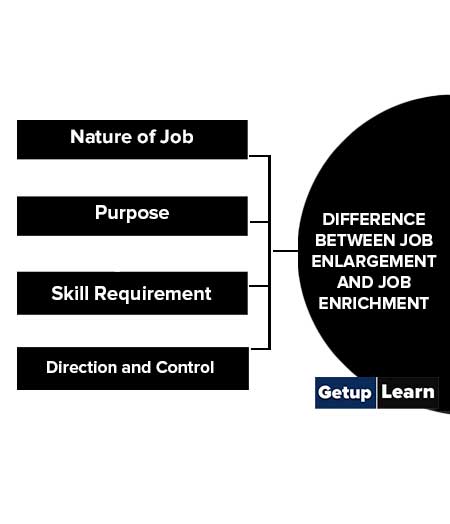
Nature of Job
The major difference between job enrichment and enlargement lies in the nature of additions to the job. Enlargement involves a horizontal loading or expansion, or addition of tasks of the same nature. Enrichment involves the vertical loading of tasks and responsibility of the job holder; it improves the quality of the job in terms of its intrinsic worth.
Purpose
The purpose of job enlargement is to reduce the monotony in performing repetitive jobs by lengthening the cycle of operation. On the other hand, the purpose of job enrichment is to make the job lively, challenging, and satisfying. It satisfies the higher level needs such as ego satisfaction, self-expression, sense of achievement, and advancement of Job holders.
Skill Requirement
Job enlargement may not necessarily require the use of additional skills that the job holder was used in performing the job before the enlargement. This is due to the similarity of additional tasks. Enrichment calls for the development and utilization of higher skills, initiative, and innovation on the part of the job holder in performing the job.
Direction and Control
Job enlargement requires direction and control from external sources, say supervisor. In fact, the job holder may require more direction and control because of the enlargement of his responsibility. Enrichment does not require external direction and control as these come from the job holder himself. He requires only feedback from his supervisor.
What is job enlargement?
Job enlargement is the process of increasing the scope of the job of a particular by adding more tasks to it. And job enrichment implies increasing the contents of a job or the deliberate upgrading of responsibility scope and challenges in work.
What is job Job design?
Job design is an attempt to create a match between job requirements and job attributes. Job rotation implies transfer to a job of the same level and status. Job simplification enables the employees to do without much-specialized training.
What is the difference between job enlargement and job enrichment?
The difference between job enrichment and job enlargement is quality and quantity. Job enrichment means improvement, or an increase with the help of upgrading and development, whereas job enlargement means adding more duties and an increased workload. By job enrichment, an employee finds satisfaction in respect to their position and personal growth potential, whereas job enlargement refers to having additional duties and responsibilities in a current job description.
What are the methods of job design?
These are the four methods of job design:
1. Job Simplification
2. Job Rotation
3. Job Enlargement
4. Job Enrichment.




